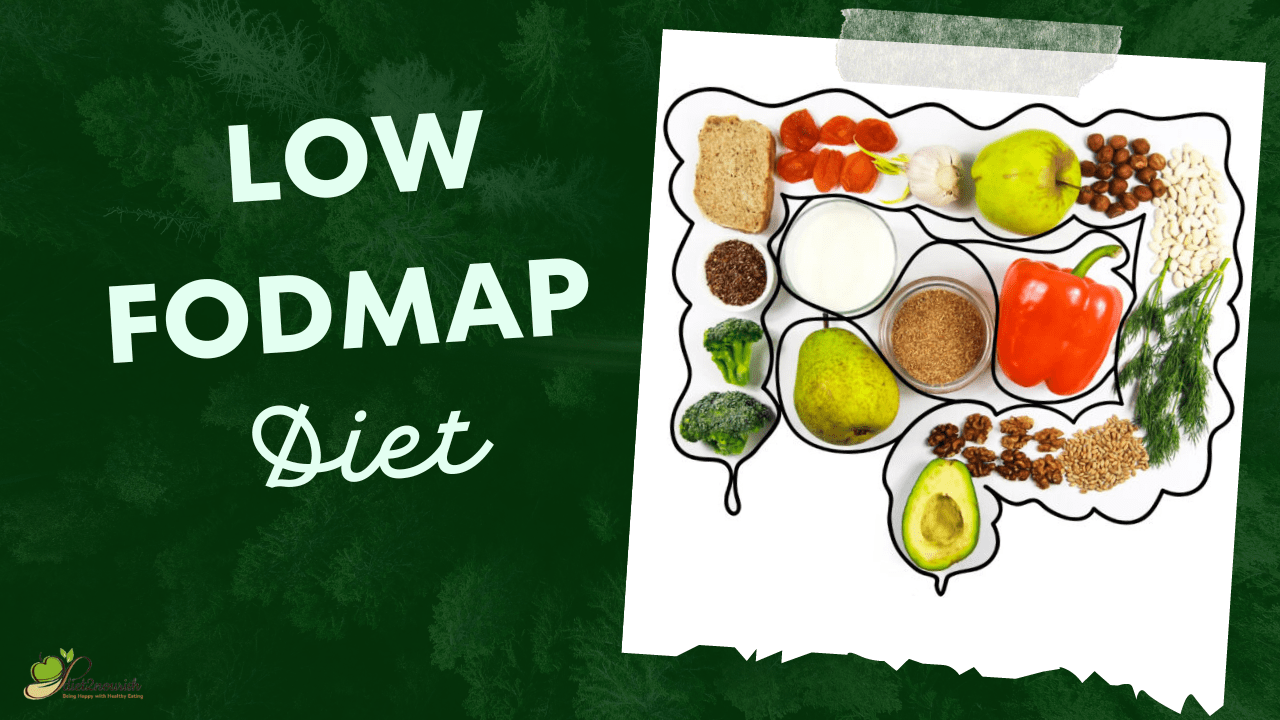Low FODMAP Diet Chart
Welcome to our beginner’s guide on the low FODMAP diet chart, where we unravel the mysteries of this powerful dietary approach for digestive health. If you’re tired of dealing with uncomfortable symptoms like bloating, gas, and abdominal pain, then this guide is for you. In this post, we will explain what FODMAPs are and how they affect digestion, dive into the basics of the low FODMAP diet chart, discuss its benefits, provide practical tips for creating your personalized diet chart, and offer guidance on long-term strategies for maintaining a healthy gut. Get ready to take control of your gut health and discover a world of relief!
What are FODMAPs and How Do They Affect Digestion
FODMAPs, which stands for Fermentable Oligosaccharides, Disaccharides, Monosaccharides, and Polyols, are a group of carbohydrates and sugar alcohols found in certain foods. While these components are naturally present in many foods, some individuals have difficulty digesting them, leading to digestive symptoms.
When FODMAPs are not properly absorbed in the small intestine, they travel to the large intestine where they ferment. This fermentation process can cause bloating, gas, abdominal pain, and other discomforts. For individuals with irritable bowel syndrome (IBS) or other digestive disorders, avoiding or reducing high-FODMAP foods can help alleviate symptoms and improve overall digestive well-being.
By understanding the role of FODMAPs and their impact on digestion, individuals can make informed choices about their diet and create a low FODMAP diet chart tailored to their specific needs.
The History Behind the Low FODMAP Diet Chart
The low FODMAP diet chart has its roots in research conducted at Monash University in Australia. In the early 2000s, a team of scientists discovered that certain types of carbohydrates, now known as FODMAPs, could trigger digestive symptoms in individuals with IBS. Through rigorous testing and experimentation, they developed the low FODMAP diet as a potential solution. Since then, the diet has gained recognition worldwide and has become a widely accepted approach for managing digestive issues. Today, the low FODMAP diet chart continues to evolve as researchers and healthcare professionals further explore its efficacy and refine its implementation.
Why Consider a Low FODMAP Diet Chart for Digestive Issues
Considering a low FODMAP diet chart can be beneficial for individuals experiencing digestive issues, particularly those with irritable bowel syndrome (IBS) or other functional gastrointestinal disorders. Here are some reasons why a low FODMAP diet is worth considering:
- Symptom relief: Research has shown that following a low FODMAP diet can significantly reduce symptoms such as bloating, gas, abdominal pain, diarrhoea, and constipation in individuals with IBS.
- Personalized approach: The low FODMAP diet chart is not a one-size-fits-all approach. It allows individuals to identify their specific trigger foods and create a personalized diet chart based on their tolerance levels, ensuring maximum symptom relief.
- Scientifically supported: The effectiveness of the low FODMAP diet chart has been backed by numerous scientific studies, making it a reputable and evidence-based approach to managing digestive issues.
- Improved quality of life: By reducing or eliminating high FODMAP foods from the diet, individuals often experience improved overall well-being, better control over their symptoms, and enhanced quality of life.
- Temporary nature: The low FODMAP diet chart is typically followed for a limited period, allowing for the identification of trigger foods. After this initial phase, some FODMAPs can be gradually reintroduced, expanding the variety of foods in the diet while still maintaining symptom control.
It’s important to note that before starting a low FODMAP diet chart or making any significant dietary changes, it’s advisable to consult with a healthcare professional or a registered dietitian who specializes in digestive health to ensure proper guidance and support throughout the process.
Identifying High FODMAP Foods: What to Avoid
When following a low FODMAP diet chart, it’s important to identify and avoid high FODMAP foods that can trigger digestive symptoms. Here are some common types of foods to watch out for:
- Fructans: Found in wheat, rye, barley, onions, garlic, and some fruits and vegetables like asparagus and artichokes.
- Lactose: Present in dairy products such as milk, yogurt, and soft cheeses.
- Fructose: High-fructose fruits like apples, pears, mangoes, and honey, as well as sweeteners like high-fructose corn syrup.
- Polyols: Sugar alcohols like sorbitol, mannitol, xylitol, and maltitol are found in some fruits, artificial sweeteners, and sugar-free products.
- Galactans: Found in legumes like lentils, chickpeas, and kidney beans.
Benefits of A Low FODMAP Diet Chart
The low FODMAP diet chart is highly beneficial for individuals dealing with gastrointestinal (GI) issues such as Irritable Bowel Syndrome (IBS) and Inflammatory Bowel Disease (IBD). In essence, this temporary diet restricts the consumption of grains, fruits, dairy, and sugar, reducing the food source available for gut bacteria. As a result, fermentation is minimized, leading to an improvement in digestion-related symptoms. Now, let’s explore the potential advantages of this low fodmap diet chart:
- Enhancement of endocrine cell density in the large intestine: Scientific studies indicate that individuals with IBS experience a greater improvement in the density of endocrine cells when following a low FODMAP diet chart compared to those without digestive issues. Additionally, this dietary approach has been found to alleviate symptoms such as stomach pain and bloating.
- Enhancement of intestinal barrier function: The low FODMAP diet has shown positive effects on reducing intestinal permeability, commonly known as “leaky gut,” in individuals with IBS. This suggests that the diet helps to decrease bacterial presence and supports the restoration of the intestinal lining.
- Regulation of histamine levels: Histamine, an immune system signaling molecule in the gut, plays a role in alerting the body to potential allergens or irritants. Following a low FODMAP diet chart has been associated with improvements in immune markers and the regulation of histamine activation in the gut.
Creating Your Low FODMAP Diet Chart: Step-by-Step Guide
Creating a personalized low FODMAP diet chart can be a helpful tool for managing digestive issues. Follow this step-by-step guide to create your own chart:
● Educate yourself: Learn about FODMAPs, their sources, and their potential impact on your symptoms. Familiarize yourself with low FODMAP food options.
● Consult a healthcare professional: Seek guidance from a registered dietitian or healthcare professional experienced in the low FODMAP diet chart. They can assess your specific needs, provide personalized advice, and ensure nutritional adequacy.
● Elimination phase: Begin with an elimination phase where you eliminate all high FODMAP foods from your diet. This phase typically lasts 2-6 weeks and helps identify trigger foods.
● Reintroduction phase: Gradually reintroduce FODMAP groups, one at a time, to assess your tolerance. This phase helps determine which specific FODMAPs trigger your symptoms.
● Customization: Based on your individual tolerance levels, create a low FODMAP diet chart that includes foods you can enjoy without triggering symptoms. Consider portion sizes and frequency of consumption.
● Plan meals and snacks: Use your low FODMAP diet chart as a guide to plan meals and snacks that are low in FODMAPs. Incorporate a variety of low FODMAP foods to ensure a balanced diet.
● Read labels: Develop the habit of reading food labels carefully to identify any hidden sources of high FODMAP ingredients in packaged foods.
● Seek support: Join support groups or online communities where you can connect with others following a low FODMAP diet chart. Share experiences, tips, and recipe ideas.
● Monitor and adjust: Keep a food and symptom diary to track your progress and identify any patterns. Adjust your chart as needed based on your individual response to different foods.
● Long-term maintenance: Once you have identified your trigger foods, work with your healthcare professional to develop a long-term maintenance plan that allows for a wider variety of foods while still managing your symptoms.
Long-Term Strategies for Maintaining a Healthy Gut on a Low FODMAP Diet
Maintaining a healthy gut while following a long-term low FODMAP diet chart is essential for overall well-being. Here are some strategies to help you achieve that:
- Balanced nutrition: Ensure your low FODMAP diet includes a wide variety of nutrient-rich foods. Incorporate fruits, vegetables, lean proteins, whole grains, and healthy fats to meet your nutritional needs. Consider working with a registered dietitian to ensure you’re getting all the necessary vitamins, minerals, and fiber.
- Gut-friendly foods: Include gut-friendly foods in your diet, such as probiotics and prebiotics. Probiotic-rich options include yogurt, kefir, and fermented vegetables. Prebiotic sources include garlic-infused oils, green bananas, and certain grains like quinoa.
- Adequate hydration: Stay hydrated by drinking enough water throughout the day. Good hydration supports optimal digestive function and helps maintain overall gut health.
- Stress management: Stress can exacerbate digestive symptoms. Practice stress-management techniques like meditation, deep breathing exercises, yoga, or engaging in activities you enjoy to help reduce stress levels.
- Regular physical activity: Engage in regular exercise as it promotes healthy digestion and overall gut health. Choose activities you enjoy and aim for a mix of aerobic exercises, strength training, and flexibility exercises.
- Mindful eating: Practice mindful eating by slowing down, chewing food thoroughly, and savouring each bite. This can aid digestion and promote better awareness of your body’s hunger and fullness cues.
- Monitor and adjust: Keep track of your symptoms and make adjustments to your diet as needed. Reassess your tolerance to certain FODMAP groups over time, and consult with a healthcare professional or registered dietitian to fine-tune your long-term diet plan.
- Regular check-ins: Schedule periodic check-ins with a healthcare professional or registered dietitian to monitor your progress, address any concerns, and ensure you’re maintaining a healthy gut while following a low FODMAP diet chart.
Remember, a low FODMAP diet chart is typically a temporary approach. It is crucial to work with a healthcare professional or registered dietitian who specializes in digestive health to create a long-term plan that meets your individual needs while promoting a healthy gut.
Bottom Line
Thus, a low-FODMAP diet chart is a nutritional strategy that can address potential IBS triggers without relying on medication. Consequently, if you’re facing challenges with IBS, it’s worth contemplating the adoption of the low FODMAP diet. This approach will undoubtedly offer the desired alleviation and revitalize your digestive system, leading to an enhanced quality of life.
Frequently Asked Questions (FAQs)
Can I eat beans and legumes while I am on the low FODMAP diet?
Answer:
You can eat some of them but not all. Some types of beans and legumes are high FODMAP. They are chickpeas and lentils. On the other hand, there are black beans and green beans. They are low in FODMAP. You can eat them while you are following a Low FODMAP diet. In addition, you can check the FODMAP content of each type of beans and lentil before consuming them.
How can I make sure I’m getting enough fibre while I am on the low FODMAP diet?
Answer:
It is important to include low FODMAP sources of fibre in your diet. Fibre plays a vital role in digestion and other health processes. You can get fibre from brown rice, quinoa, oats, and certain fruits and vegetables. They are low in FODMAP content. Therefore, they will not disturb your diet. You can also consider taking a fibre supplement if your dietitian recommends.
Can I follow the low FODMAP diet plan if I’m a vegetarian or vegan?
Answer:
The answer to this question is YES. It is possible to follow the low FODMAP diet if you’re vegetarian or vegan. You may require more careful planning. It is to ensure you’re getting all of the necessary nutrients. There are a variety of vegetarian food options that you can eat. You can include them in your vegan or vegetarian diet. Working with a registered dietitian can also be helpful in this case.







